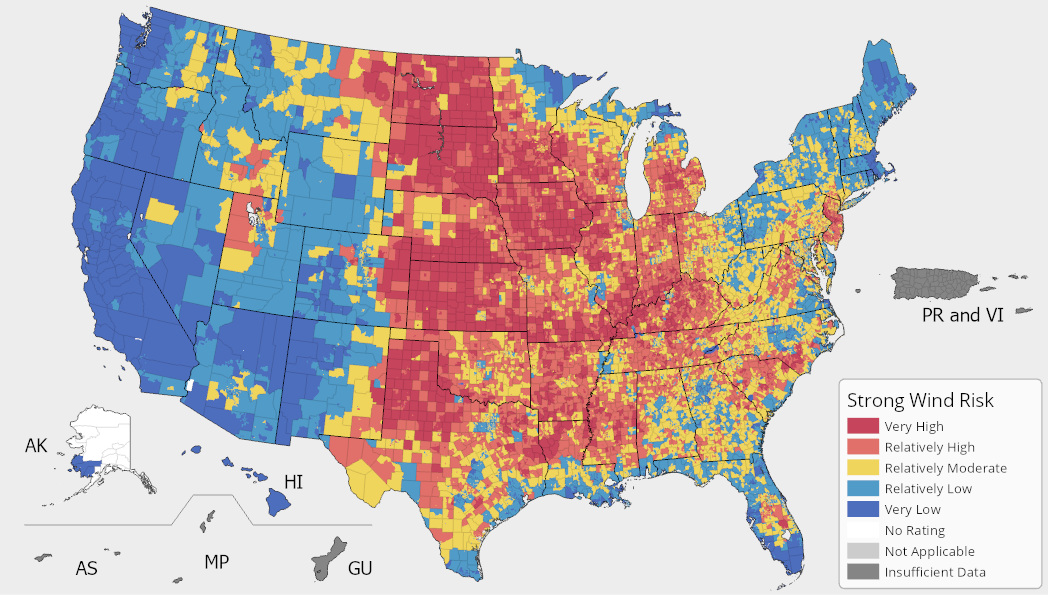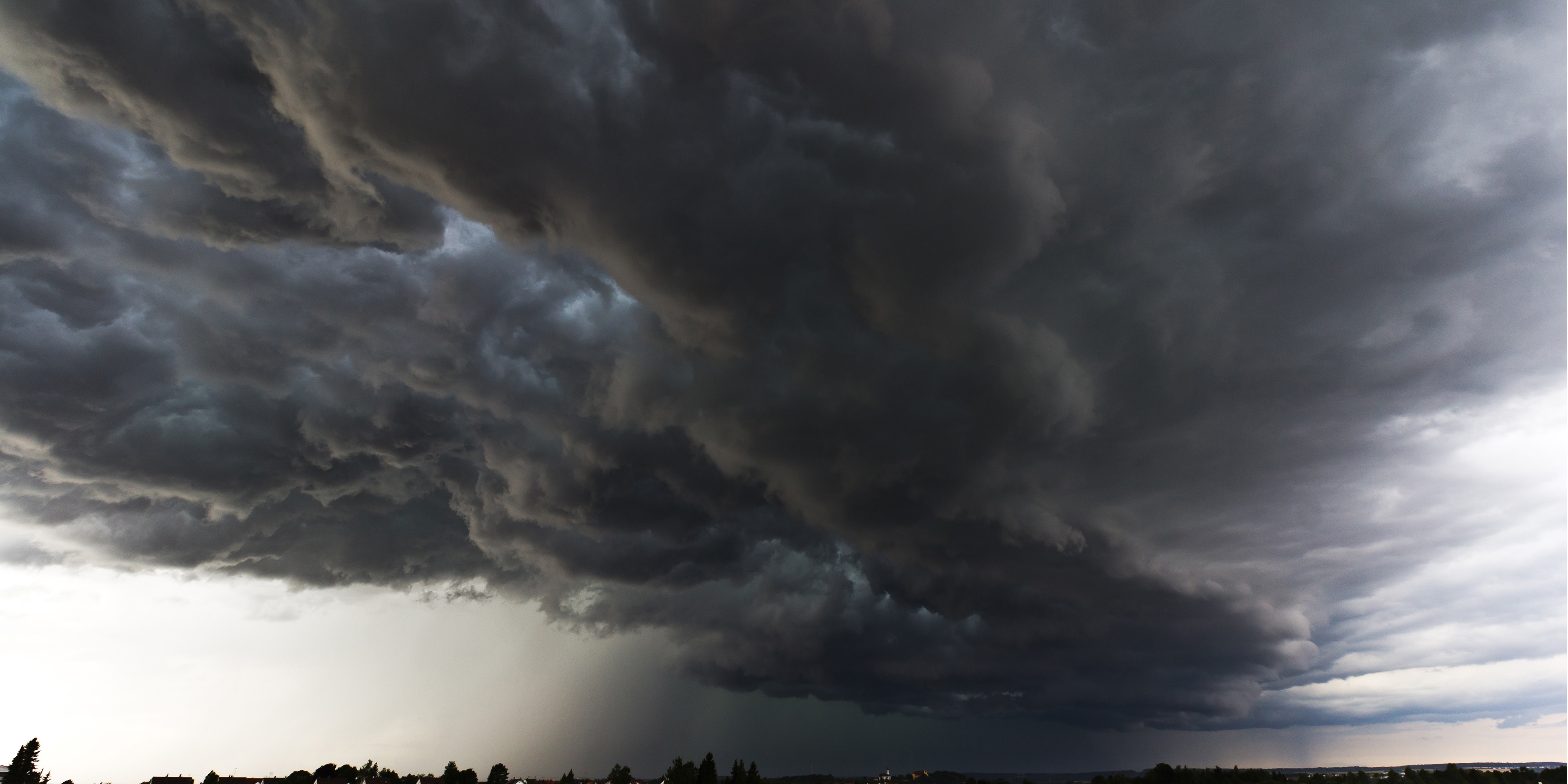Strong Wind
Strong Wind consists of damaging winds, often originating from thunderstorms, that are classified as exceeding 58 mph.
In the National Risk Index, a Strong Wind Risk Index score and rating represent a community's relative risk for Strong Wind when compared to the rest of the United States. A Strong Wind Expected Annual Loss score and rating represent a community's relative level of expected building, population, and agriculture loss each year due to Strong Wind when compared to the rest of the United States.

Strong Wind Exposure
A Strong Wind exposure value represents a community's building value (in dollars), population (in both people and population equivalence), and agriculture value (in dollars) exposed to Strong Wind.
Strong Wind Annualized Frequency
A Strong Wind annualized frequency value represents the average number of recorded Strong Wind hazard occurrences (events) per year over the period of record (34 years).
Strong Wind Historic Loss Ratio
A Strong Wind historic loss ratio is the representative percentage of the exposed consequence type value (building, population, or agriculture) expected to be lost due to a Strong Wind hazard occurrence.
Strong Wind Processing Methodology
For comprehensive details about the Strong Wind processing methodology, see the National Risk Index Technical Documentation.


